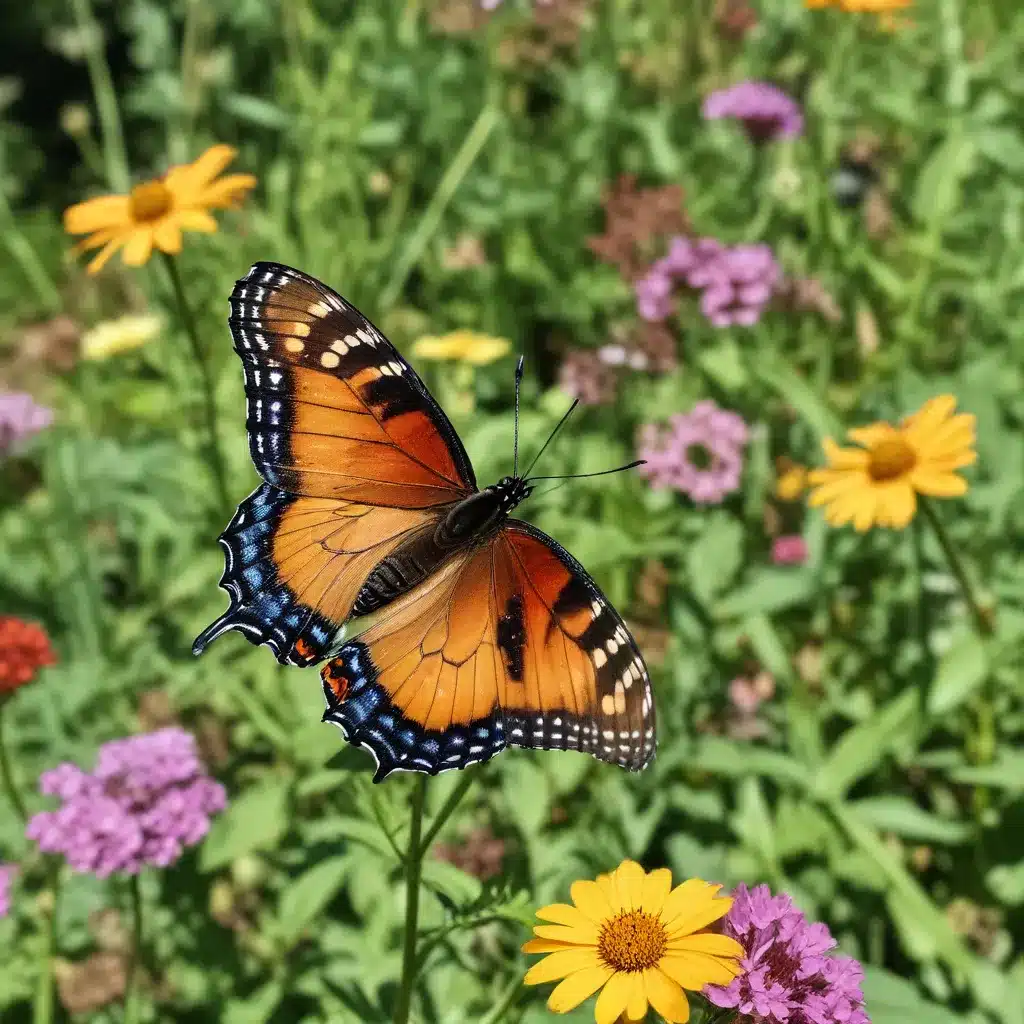
As a farm educator at Crooked Pines Farm, I’m often asked how to create a butterfly garden that will thrive year-round. While planting a patch of milkweed is a great start, truly cultivating a vibrant pollinator habitat requires a more holistic approach. By considering the full life cycle of our local butterflies and incorporating a diversity of native plants, we can build a lush, sustainable garden that supports generations of these enchanting fliers.
Farmscape Design Considerations
The first step is to identify your specific goals. Are you simply looking to attract a variety of butterflies to your yard come spring? Or are you aiming to support and increase pollinator populations over the long term? This distinction will guide the overall design of your farmscape.
Landscape Planning
If your primary aim is to delight in the sight of colorful butterflies, focus on planting a mix of nectar-rich flowers that will bloom at different times throughout the season. Non-toxic options like asters, thistles, and sweet alyssum can attract a wide range of species. Arrange these in eye-catching beds or borders.
However, for a more comprehensive, year-round pollinator habitat, you’ll need to consider the full life cycle of local butterflies. This means incorporating host plants that serve as food sources for their caterpillar larvae, in addition to the nectar-producing flowers that adults rely on.
Site Selection
Where you site your butterfly garden is also crucial. Ideally, locate it in an area with well-draining, nutrient-rich soil and ample sunlight. Avoid heavily trafficked zones, as butterflies prefer calm, sheltered spaces. If possible, integrate your garden directly into your cropping system, positioning it near rows of vegetables or orchards to maximize the benefit to your main crops.
Habitat Creation
Beyond just the plants themselves, you can further enhance your butterfly garden by providing additional overwintering and nesting sites. Leave small piles of leaf litter and dead plant stems in discreet corners, which butterfly larvae and hibernating adults may use for shelter. Strategically placing logs, rocks, or water sources can also attract a diverse array of pollinators.
Native Plant Selection
The key to sustaining butterflies is to incorporate a variety of native plants that are adapted to your local climate and soil conditions. These will not only thrive with minimal care, but also provide the exact food and habitat that your regional butterfly species require.
Nectar-Rich Flowers
When choosing flowering plants, opt for a mix that will provide nectar throughout the growing season. Early spring bloomers like wild lilac and serviceberry can kickstart the season, followed by milkweed, coneflowers, and zinnias in the summer, and asters and goldenrods in the fall.
Host Plants
Don’t forget to include larval host plants as well. These are the specific species that butterfly caterpillars feed on, such as white oak for the luna moth or violets for the great spangled fritillary. Incorporating a diversity of host plants will support a wider variety of butterfly species.
Seasonal Blooms
Strive for a succession of flowering plants that will ensure a continuous nectar source, from the first spring blossoms to the last autumn berries. This seasonal complementarity is key to sustaining butterflies year-round.
Pollinator Attraction
With the right mix of native plants in place, you’ll soon start to see a vibrant array of butterflies, bees, hummingbirds, and other pollinators visiting your farmscape. Pay close attention to which species are drawn to which plants.
Butterfly Species
The Hudson Valley is home to over 100 butterfly species, from the iconic monarch to the delicate pearl crescent. By learning to identify the unique characteristics and habitat preferences of your local varieties, you can tailor your garden to attract your favorite fliers.
Other Pollinators
While butterflies may steal the spotlight, don’t overlook the crucial role that other pollinators play. Providing resources for bees, flies, beetles, and moths will further enhance the diversity and resilience of your farmscape.
Habitat Preferences
Different pollinators are drawn to distinct microhabitats. Planting in layers, with tall flowering shrubs, mid-height perennials, and groundcover plants, can accommodate the varied needs of your local pollinator community.
Maintenance and Care
Maintaining your butterfly garden with organic practices and careful monitoring will ensure its long-term success. Avoid synthetic pesticides and herbicides, which can harm beneficial insects. Instead, embrace natural pest control strategies and hand-pull weeds to protect your pollinators.
Organic Practices
In addition to forgoing harsh chemicals, you can further nurture your garden’s ecosystem by applying compost or mulch to enrich the soil, and leaving some areas undisturbed to provide shelter and overwintering sites.
Pest Management
If you do encounter pests, focus on integrated pest management techniques that target the specific problem without harming your pollinators. For example, you might use row covers to exclude pests from your vegetable crops while leaving the butterfly plants unprotected.
Monitoring and Observation
Regularly observe your garden and keep records of the butterflies, bees, and other creatures you spot. This data can help you fine-tune your plantings and management practices to better support your local pollinators. You might even consider participating in a citizen science program to contribute to larger-scale pollinator conservation efforts.
By embracing the farmscape approach and designing your butterfly garden with the full life cycle of pollinators in mind, you can create a vibrant, sustainable habitat that will delight your family and support the broader ecosystem. To get started, be sure to check out the Hudson Valley Pollinator Action Guide and visit local native plant nurseries like Wild Gardens Nursery or The Old Dairy Nursery & Gardens. With a little planning and care, your backyard can become a true oasis for pollinators.


